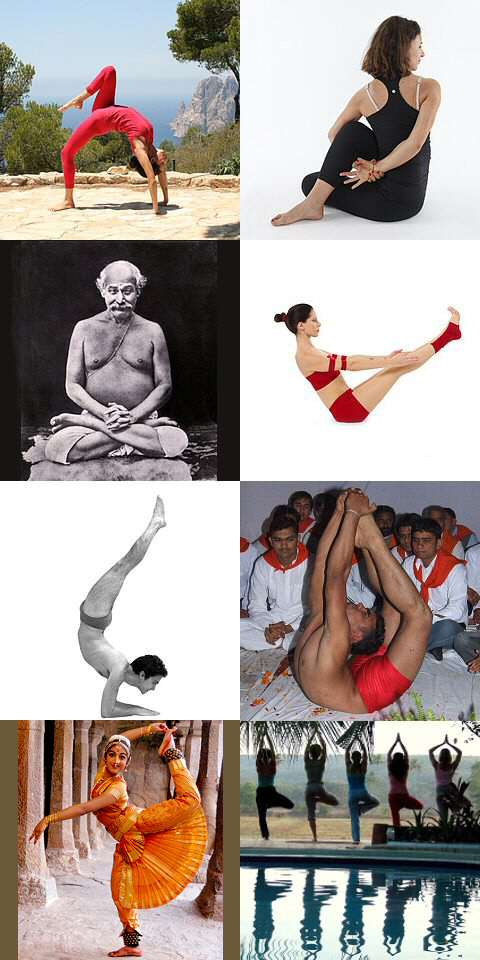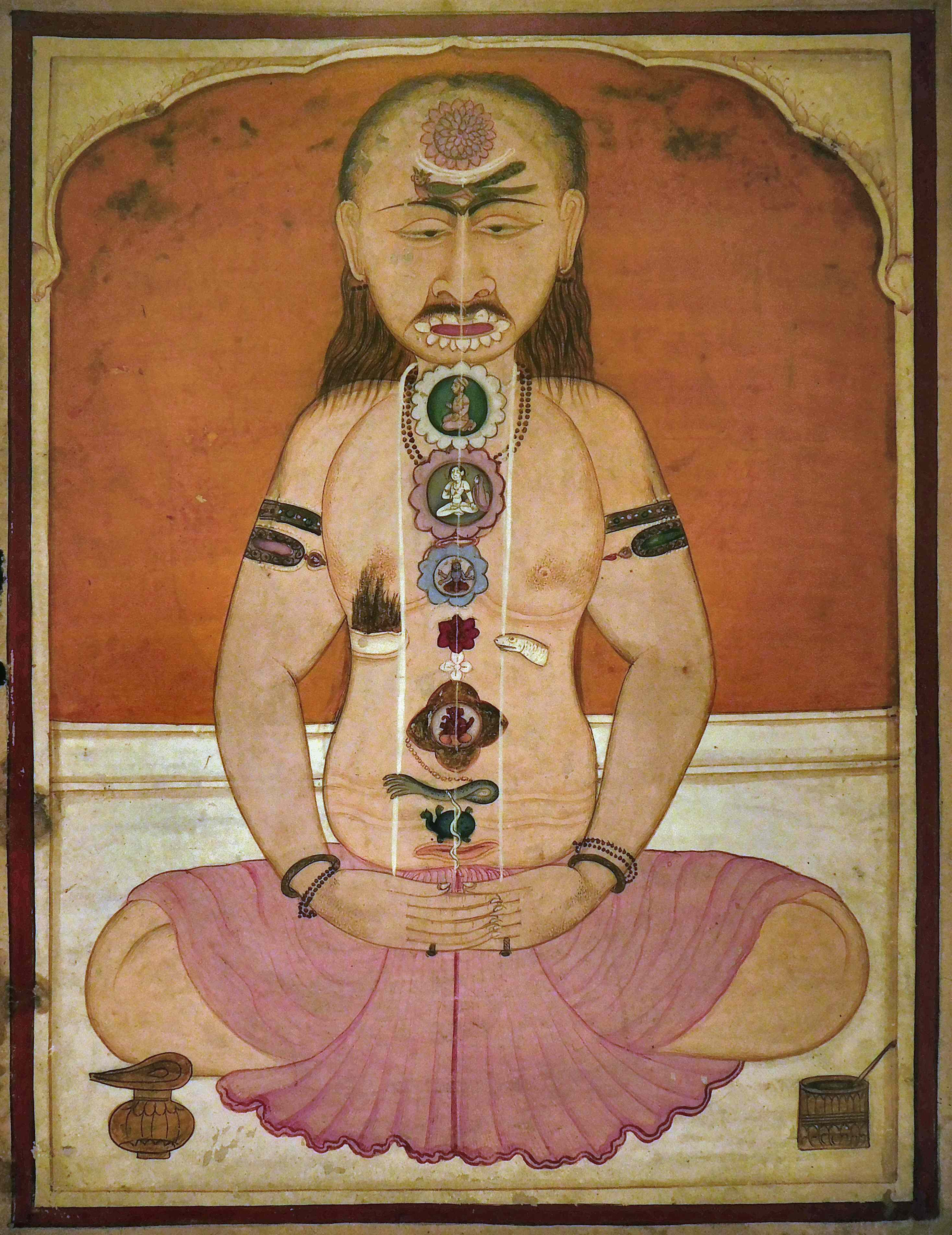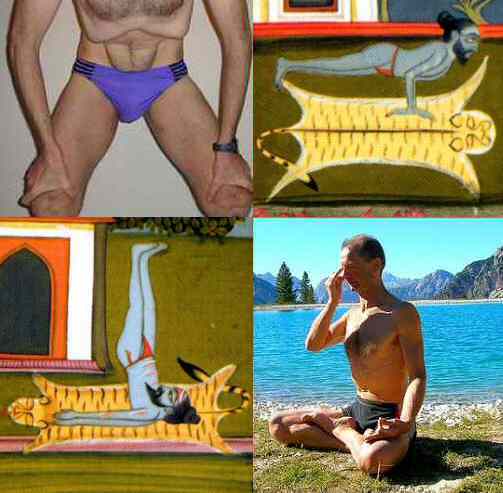|
Vimānārcanākalpa
The ''Vimānārcanākalpa'' is a 10th to 11th century text on Hatha yoga, attributed to the sage Marichi. Text The ''Vimanarcanakalpa'' is a 10th to 11th century prose text on Hatha yoga, attributed to the sage Marichi. revised from American Academy of Religions conference, San Francisco, 19 November 2011. It states that yoga is the union of the individual with the supreme self. It is one of the earliest texts to describe a non-seated asana and to call such postures asanas (the term originally and literally meaning a seat), namely Mayurasana the peacock pose. In chapter 96 it describes nine asanas in all (Brahmasana, Svastikasana, Padmasana, Gomukhasana, Simhasana, Muktasana, Virasana, Bhadrasana, and Mayurasana), some 500 years before the ''Hatha Yoga Pradipika''. Its account of Mayurasana, in James Mallinson's translation, is: The text teaches a method of pratyahara Pratyahara () or the 'gathering towards' is the fifth element among the Eight stages of Patanjali's ... [...More Info...] [...Related Items...] OR: [Wikipedia] [Google] [Baidu] |
Muktasana
Siddhasana (; ) or Accomplished Pose is an ancient seated asana in hatha yoga and modern yoga as exercise suitable for meditation. The names Muktasana (, Liberated Pose) and Burmese position are sometimes given to the same pose, sometimes to an easier variant, Ardha Siddhasana. Svastikasana has each foot tucked as snugly as possible into the fold of the opposite knee. Siddhasana is one of the oldest asanas. It is described as a meditation seat in the early Hatha Yoga text, the 10th century '' Goraksha Sataka''. This states that Siddhasana ranks alongside Padmasana (lotus position) as the most important of the asanas, opening the way to liberation. The 15th-century ''Hatha Yoga Pradipika'' similarly suggests that all other asanas are unnecessary once Siddhasana has been mastered. Etymology The name comes from the Sanskrit words ''siddha'' () meaning both "perfect" and "adept", and () meaning "posture" or "seat". The name Muktasana comes from meaning "liberation". Ann Swan ... [...More Info...] [...Related Items...] OR: [Wikipedia] [Google] [Baidu] |
Asana
An āsana (Sanskrit: आसन) is a body posture, originally and still a general term for a sitting meditation pose,Verse 46, chapter II, "Patanjali Yoga sutras" by Swami Prabhavananda, published by the Sri Ramakrishna Math p. 111 and later extended in hatha yoga and modern yoga as exercise, to any type of position, adding reclining, standing, inverted, twisting, and balancing poses. The ''Yoga Sutras of Patanjali'' define "asana" as " position thatis steady and comfortable". Patanjali mentions the ability to sit for extended periods as one of the eight limbs of his system. Patanjali '' Yoga sutras'', Book II:29, 46 Asanas are also called yoga poses or yoga postures in English. The 10th or 11th century '' Goraksha Sataka'' and the 15th century '' Hatha Yoga Pradipika'' identify 84 asanas; the 17th century '' Hatha Ratnavali'' provides a different list of 84 asanas, describing some of them. In the 20th century, Indian nationalism favoured physical culture in response t ... [...More Info...] [...Related Items...] OR: [Wikipedia] [Google] [Baidu] |
Mayurasana
Mayūrāsana () or Peacock pose is a hand-balancing asana in hatha yoga and modern yoga as exercise with the body held horizontal over the hands. It is one of the oldest non-seated asanas, described in the 10th century. Etymology and origins The name comes from the Sanskrit words () meaning "peacock" and () meaning "posture". Mayurasana is one of the oldest non-seated asanas used in hatha yoga; it is first described in the 10th century '' Vimānārcanākalpa''. The '' Vāsiṣṭha Saṁhitā'' 1.76-7 states that it destroys all sins. File:Nath yogi in Mayurasana peacock pose.jpg, Mural depicting a Nath yogi in Mayurasana at the Mahamandir temple, Jodhpur, India, c. 1810 Description In this asana the body is raised like a horizontal stick holding the floor with both palms while the body is supported by the elbows. Variations Hamsasana (Swan Pose) is identical to Mayurasana except that the hands are placed with the fingers pointing forwards. Padma Mayurasana (Lotus in ... [...More Info...] [...Related Items...] OR: [Wikipedia] [Google] [Baidu] |
Svastikasana
Siddhasana (; ) or Accomplished Pose is an ancient seated asana in hatha yoga and modern yoga as exercise suitable for meditation. The names Muktasana (, Liberated Pose) and Burmese position are sometimes given to the same pose, sometimes to an easier variant, Ardha Siddhasana. Svastikasana has each foot tucked as snugly as possible into the fold of the opposite knee. Siddhasana is one of the oldest asanas. It is described as a meditation seat in the early Hatha Yoga text, the 10th century '' Goraksha Sataka''. This states that Siddhasana ranks alongside Padmasana (lotus position) as the most important of the asanas, opening the way to liberation. The 15th-century ''Hatha Yoga Pradipika'' similarly suggests that all other asanas are unnecessary once Siddhasana has been mastered. Etymology The name comes from the Sanskrit words ''siddha'' () meaning both "perfect" and "adept", and () meaning "posture" or "seat". The name Muktasana comes from meaning "liberation". Ann Swan ... [...More Info...] [...Related Items...] OR: [Wikipedia] [Google] [Baidu] |
Simhasana
Simhasana (; ) or Lion Pose is an asana in hatha yoga and modern yoga as exercise. Etymology and origins The name comes from the Sanskrit words (), meaning "lion", and (), meaning "posture" or "seat". The pose has also been named Narasimhasana, as in the 19th century '' Joga Pradipika'', from Sanskrit Narasimha, a lion-man avatar of the god Vishnu. The posture is described in the tenth century '' Vimānārcanākalpa''. Description The practitioner kneels with the buttocks on the inner arches of the feet, stretches the arms forwards with the hands outspread just off the ground, and makes a facial expression with the mouth open wide and the tongue out to resemble a lion. The yoga guru B. K. S. Iyengar notes in his 1966 '' Light on Yoga'' that this is the traditional pose; he calls it Simhasana I. Variations Iyengar's Simhasana II begins from lotus position (Padmasana). The practitioner then stands on the knees and moves the body forwards until the front of the body fac ... [...More Info...] [...Related Items...] OR: [Wikipedia] [Google] [Baidu] |
Hatha Yoga Pradipika
The ''Haṭha Yoga Pradīpikā'' ( or Light on Hatha Yoga) is a classic fifteenth-century Sanskrit manual on haṭha yoga, written by Svātmārāma, who connects the teaching's lineage to Matsyendranath of the Nathas. It is among the most influential surviving texts on haṭha yoga, being one of the three classic texts alongside the ''Gheranda Samhita'' and the ''Shiva Samhita''. More recently, eight works of early hatha yoga that may have contributed to the ''Hatha Yoga Pradipika'' have been identified. Title and composition Different manuscripts offer different titles for the text, including ''Haṭhayogapradīpikā'', ''Haṭhapradīpikā'', ''Haṭhapradī'', and ''Hath-Pradipika''. It was composed by Svātmārāma in the 15th century as a compilation of the earlier haṭha yoga texts. Svātmārāma incorporates older Sanskrit concepts into his synthesis. He introduces his system as a preparatory stage for physical purification before higher meditation or Raja Yoga. S ... [...More Info...] [...Related Items...] OR: [Wikipedia] [Google] [Baidu] |
Hindu Texts
Hindu texts or Hindu scriptures are manuscripts and voluminous historical literature which are related to any of the diverse traditions within Hinduism. Some of the major Hindus, Hindu texts include the Vedas, the Upanishads, and the Itihasa. Scholars hesitate in defining the term "Hindu scriptures" given the diverse nature of Hinduism,Dominic Goodall (1996), Hindu Scriptures, University of California Press, , p. ix–xliii but many list the Āgama (Hinduism), Agamas as Hindu scriptures,Klaus Klostermaier (2007), A Survey of Hinduism: Third Edition, State University of New York Press, , pp. 46–52, 76–77 and Dominic Goodall includes Bhagavata Purana and Yajnavalkya Smriti in the list of Hindu scriptures as well. History There are two historic classifications of Hindu texts: ''Śruti, Shruti'' (Sanskrit: श्रुति, ) – that which is heard, and ''Smriti'' (Sanskrit: स्मृति, IAST: ''Smṛti'') – that which is remembered. The ''Shruti'' texts refer to th ... [...More Info...] [...Related Items...] OR: [Wikipedia] [Google] [Baidu] |
10th-century Sanskrit Literature
1 (one, unit, unity) is a number, numeral, and glyph. It is the first and smallest positive integer of the infinite sequence of natural numbers. This fundamental property has led to its unique uses in other fields, ranging from science to sports, where it commonly denotes the first, leading, or top thing in a group. 1 is the unit of counting or measurement, a determiner for singular nouns, and a gender-neutral pronoun. Historically, the representation of 1 evolved from ancient Sumerian and Babylonian symbols to the modern Arabic numeral. In mathematics, 1 is the multiplicative identity, meaning that any number multiplied by 1 equals the same number. 1 is by convention not considered a prime number. In digital technology, 1 represents the "on" state in binary code, the foundation of computing. Philosophically, 1 symbolizes the ultimate reality or source of existence in various traditions. In mathematics The number 1 is the first natural number after 0. Each natural number, ... [...More Info...] [...Related Items...] OR: [Wikipedia] [Google] [Baidu] |
Roots Of Yoga
A root is the part of a plant, generally underground, that anchors the plant body, and absorbs and stores water and nutrients. Root or roots may also refer to: Art, entertainment, and media * ''The Root'' (magazine), an online magazine focusing on African-American culture * The Roots, a location in the video game '' Kya: Dark Lineage'' Films * ''Roots'' (film) (), a 1955 Mexican drama * '' Poor Relatives'', also released as ''Roots'', a 2005 Russian film * ''Roots'', the English title for the 2019 Tamil film '' Sethum Aayiram Pon'' Literature and stage plays * ''Koreni'' (novel) (English: ''The Roots''), a 1954 novel by Serbian author Dobrica Ćosić * ''Roots'' (play), a 1958 play by Arnold Wesker * '' Roots: The Saga of an American Family'', a 1976 novel by Alex Haley about slavery in the United States Music * Root (chord), the fundamental note of a chord * Roots music (other) Groups and individuals * Root (band), a Czech metal band * Root (singer), a Japanese ... [...More Info...] [...Related Items...] OR: [Wikipedia] [Google] [Baidu] |
Pratyahara
Pratyahara () or the 'gathering towards' is the fifth element among the Eight stages of Patanjali's Ashtanga Yoga, as mentioned in his classical work, ''Yoga Sutras of Patanjali'' composed in the 2nd century BCE. It is also the first stage of the six-branch yoga (''ṣaḍaṅgayoga'') of the Buddhist Kālacakra tantra, where it refers to the withdrawal of the five senses from external objects to be replaced by the mentally created senses of an enlightened deity. This phase is roughly analogous to the physical isolation (''kāyaviveka'', Tib. ''lus bden'') phase of Guhyasamāja tantra. For Patanjali, it is a bridge between the ''bahiranga'' (external) aspects of yoga namely, yama, niyama, asana, pranayama, and the ''antaranga'' (internal) yoga. Having actualized the pratyahara stage, a practitioner is able to effectively engage into the practice of Samyama. At the stage of pratyahara, the consciousness of the individual is internalized in order that the sensations from the ... [...More Info...] [...Related Items...] OR: [Wikipedia] [Google] [Baidu] |
James Mallinson (author)
Sir James Mallinson, 5th Baronet, of Walthamstow (born 22 April 1970) is a British Indologist, writer and translator. He is Boden Professor of Sanskrit at the University of Oxford, and recognised as one of the world's leading experts on the history of medieval Hatha yoga. Early life Mallinson became interested in India by reading Rudyard Kipling's novel ''Kim (novel), Kim'' as a teenager; the book describes an English boy travelling India with a holy man. He was educated at Eton College and the University of Oxford, where he read Sanskrit and Old Iranian for his bachelor's degree, and studied the ethnography of South Asia for his master's degree at SOAS University of London. Mallinson is described as "perhaps the only baronet to wear dreadlocks"; he let his hair grow out from 1988 on his first visit to India during his gap year. He cut his hair in 2019 after the death of his guru, Mahant Balyogi Sri Ram Balak Das, who had initiated him into the Ramanandi Sampradaya at the Ujjai ... [...More Info...] [...Related Items...] OR: [Wikipedia] [Google] [Baidu] |
Hatha Yoga
Hatha yoga (; Sanskrit हठयोग, International Alphabet of Sanskrit Transliteration, IAST: ''haṭhayoga'') is a branch of yoga that uses physical techniques to try to preserve and channel vital force or energy. The Sanskrit word हठ ''haṭha'' literally means "force", alluding to a system of physical techniques. Some hatha yoga style techniques can be traced back at least to the 1st-century CE, in texts such as the Hindu Itihasa, Sanskrit epics and Buddhism's Pali canon. The oldest dated text so far found to describe hatha yoga, the 11th-century ''Amritasiddhi, Amṛtasiddhi'', comes from a Tantra, tantric Buddhist milieu. The oldest texts to use the terminology of ''hatha'' are also Vajrayana Buddhist. Hindu hatha yoga texts appear from the 11th century onward. Some of the early hatha yoga texts (11th-13th c.) describe methods to raise and conserve bindu (vital force, that is, semen, and in women ''rajas –'' menstrual fluid). This was seen as the physical esse ... [...More Info...] [...Related Items...] OR: [Wikipedia] [Google] [Baidu] |







